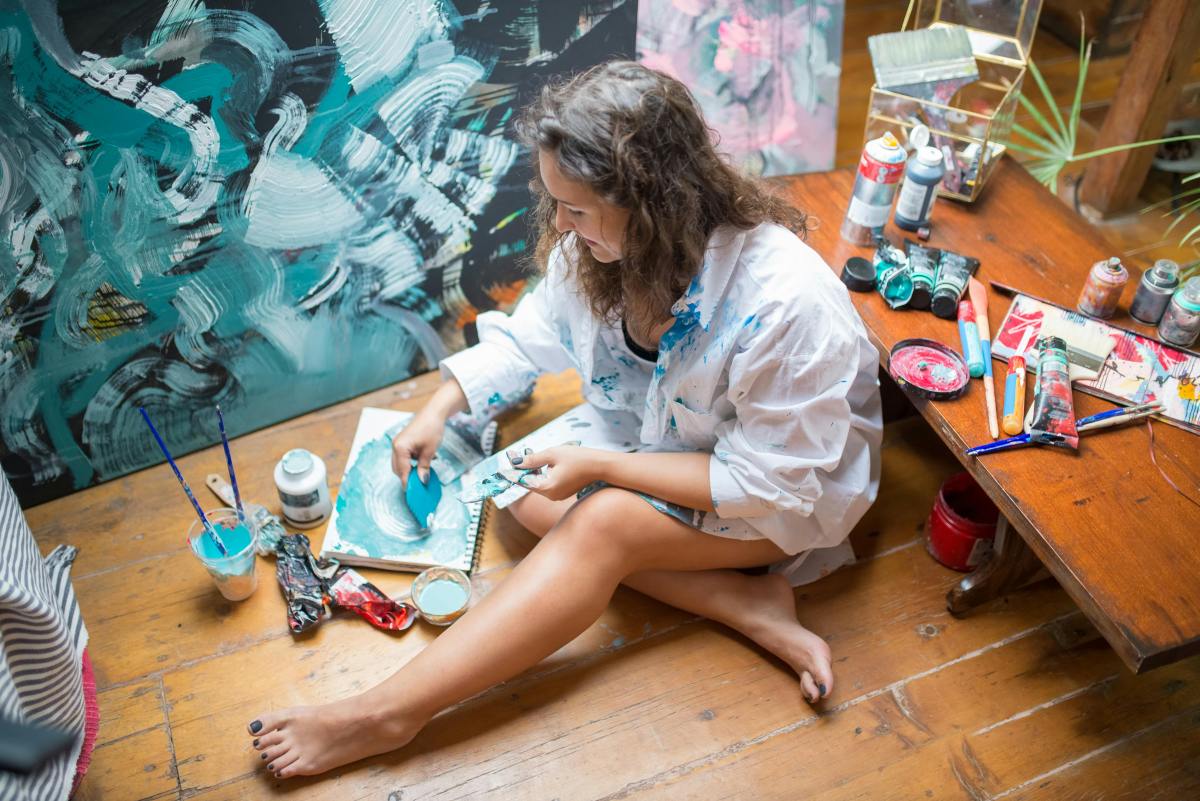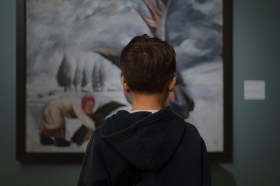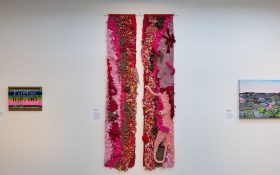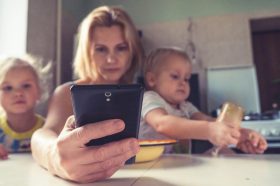As the new year begins, art teachers around the country will face a familiar challenge: how to uncork the creativity behind the shy, self-conscious faces in the classroom. After all, adolescents are renowned for their fear of judgement and their desire to “fit in” with peers.
For Jemima Saunders, a Visual Arts and Film Production teacher working in the senior secondary space at Darwin High School, it’s all about starting with a safe and supportive environment. Then students can feel free and fearless enough to explore ideas, pursue curiosity and ultimately fulfil their assessment tasks.
‘Some groups come in and they’re already full of ideas,’ Saunders tells ArtsHub, ‘but for others it takes more time and patience – it can even take the full two years to get some to relax. There’s no magic button you can press, but there are lots of things you can try in order to create a culture of trust and openness in the room – trust between student and teacher, and between the students in the group.’
There are also a number of different activities and processes you can employ, says Saunders, ‘to prevent that situation of looking at a blank piece of paper and saying, “Brainstorm ideas!”, which is my own personal nightmare.’
Saunders will be sharing some of these ideas and activities with other teachers in an interactive and collaborative workshop entitled ‘How to inspire original ideas’, held as part of the National Visual Art Education Conference (NVAEC) at the National Gallery of Australia (NGA) in Canberra (22-24 January).
Saunders has worked in all kinds of teaching environments: public, private, urban, rural, remote, primary, special education and secondary, in both the Northern Territory and country NSW. She is also the President of the Art Educators of the Northern Territory (AENT) and is a practising visual artist working across textiles, printmaking and painting. She says that teaching art – and, most recently, teaching filmmaking too – is endlessly inspiring and works well with her own tendency to ‘do many things and have a lot of different ideas and projects on the go at once’.
Read: Creativity begins at home: families in support of artistic growth
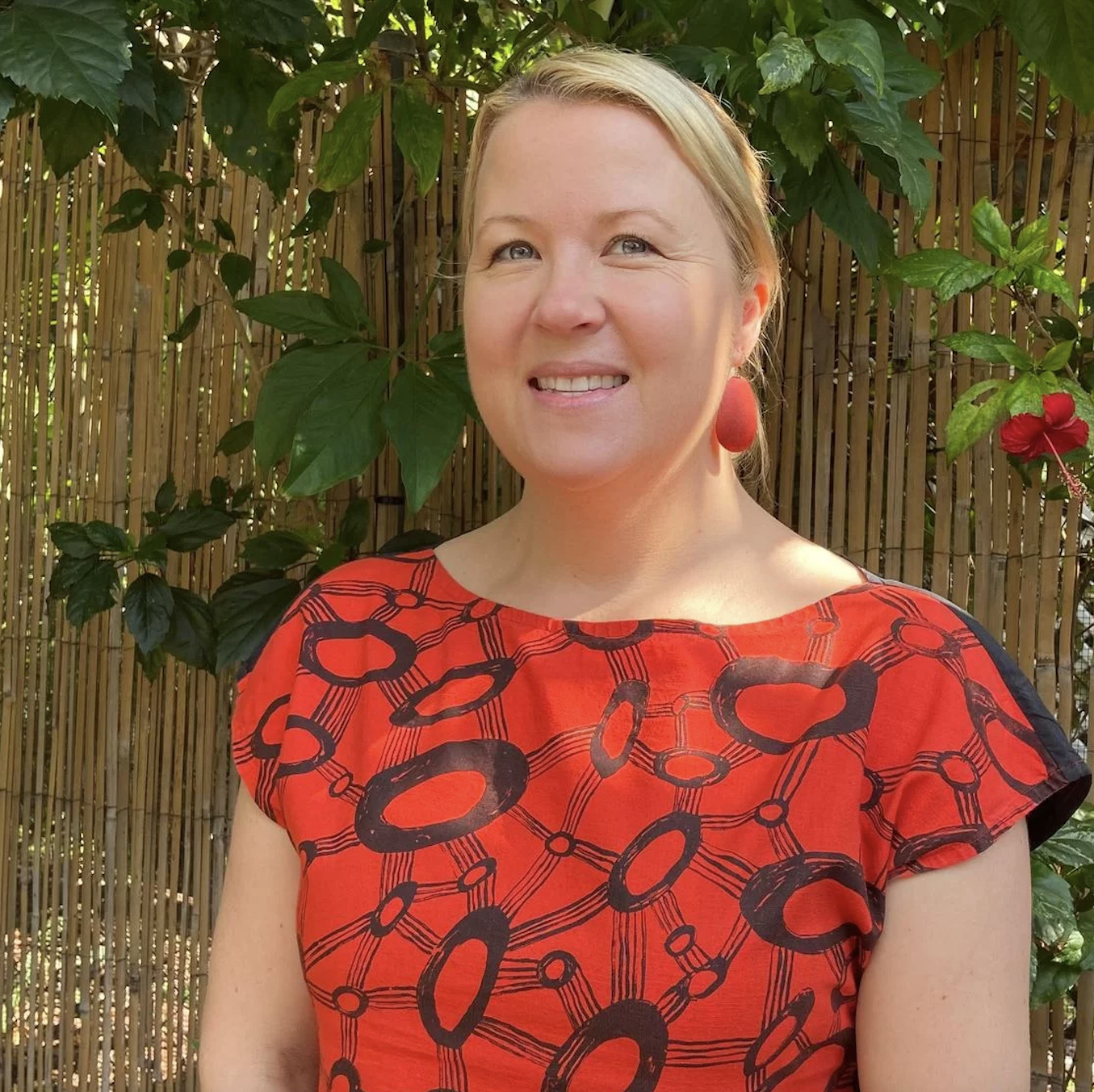
The Northern Territory – a unique learning environment
Darwin High School is a well-performing independent public school for students in Years 10-12, located in Bullocky Point, right near the Darwin Harbour and about halfway on the map between Mindil Beach and the Museum and Art Gallery of the Northern Territory (MAGNT). There are about 1300 students and, while the school is a centre of excellence for science and maths, Saunders says there is also a strong emphasis on creativity, with several streams of art available, from Art Practical to Design, Photography, Printing, Ceramics and Film. She says she would have loved to have had these options as a high school art student herself, ‘to really deep dive into creativity’.
Saunders is aware that other art educators in the Northern Territory are working with fewer resources, often in remote areas, including with First Nations communities, where there may be only one teacher. Opportunities for professional development (PD), especially in-person PD, are sparse, and teachers all over the territory must also accommodate the extremes of the tropical wet season. Saunders says that the AENT is currently researching the needs of these teachers and seeking ways to inspire and assist them. ‘We’re there to provide some community, some resources, and even just to be a sounding board,’ she explains.
But whatever kind of classroom art teachers find themselves in, the principles of inspiring original ideas apply.
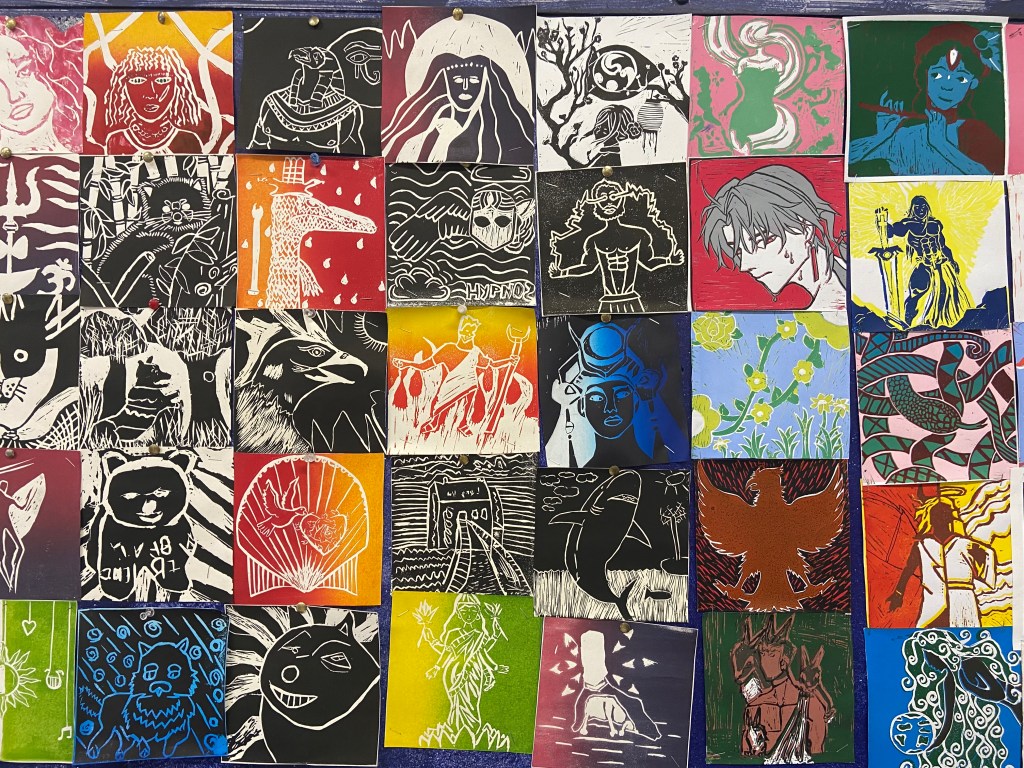
Build relationships first and create a centre of calm
Over the last five years, like many educators, Saunders has noticed increasing insecurity and pressure among high school students and says that, more than ever, the art class can become ‘a centre of calm for students within the school’.
‘Whatever you’re teaching, your primary job is to build those relationships with the students, and within the class group, because if they don’t feel comfortable they’re not going to learn anything. If everyone’s too scared to say a word out loud, then it’s going to be very hard for someone offering up their personal creative idea that came from deep inside of them.’
Read: The Artist’s Way: an invitation to change your life
Safety begins with having good conversations, asking good questions and showing an interest in what students themselves are interested in.
‘It’s about taking notes and seeing if there are ways we can incorporate those interests into conversations and questions,’ she says, ‘so students are creating work that’s relevant and appropriate for them, not just what they think we want to see, not just what they think is going to get them an A. That’s not what I’m interested in. I’m interested in what makes them curious and makes them want to do the boring bits and put in the hard work.’
One ice-breaker Saunders suggests is inviting the class to create a collaborative playlist of music that can be played during working time. This exposes everyone to different ideas and sounds, gives students ownership and agency, and also serves as a way for a teacher to read the mood.
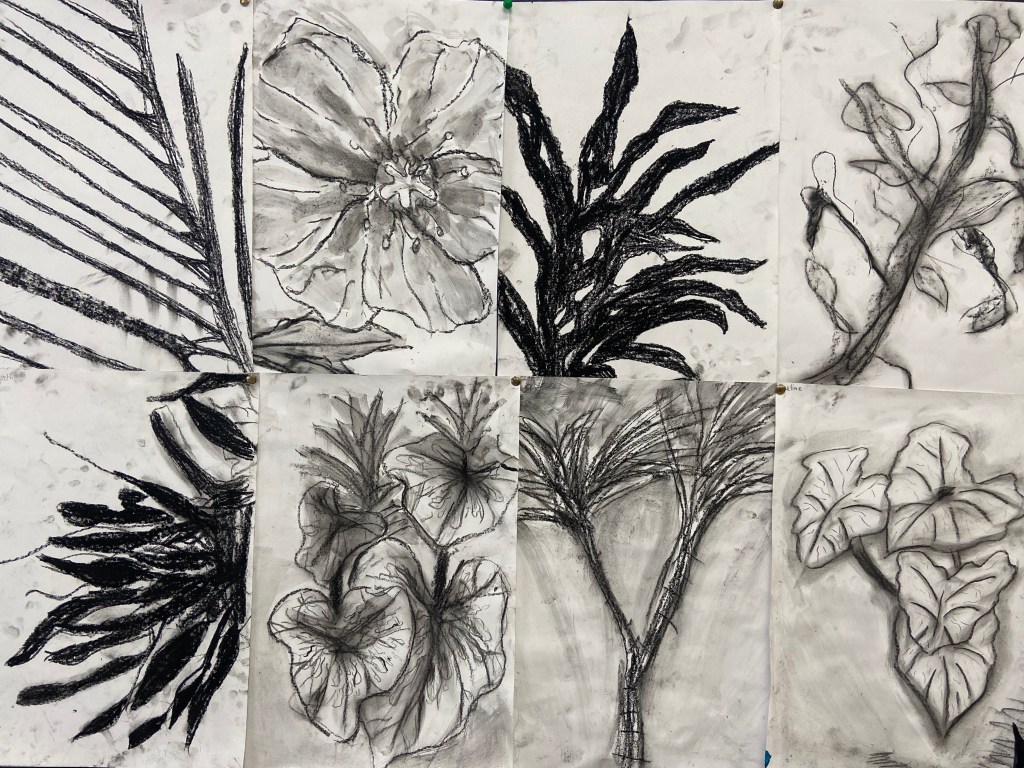
Beyond cliché – inspiring divergent thinking
If inspiring original ideas is the goal, what are teachers trying to avoid? What are some of the clichés of high school art?
Saunders is reticent to name them but, when pressed, says things like appropriation or copying, or ‘using themes that students have no real connection with; for example, creating something about body image and anorexia without having any issue with it’.
She adds with a laugh, ‘There are lots of your usual clichés, like melted Barbie heads!’
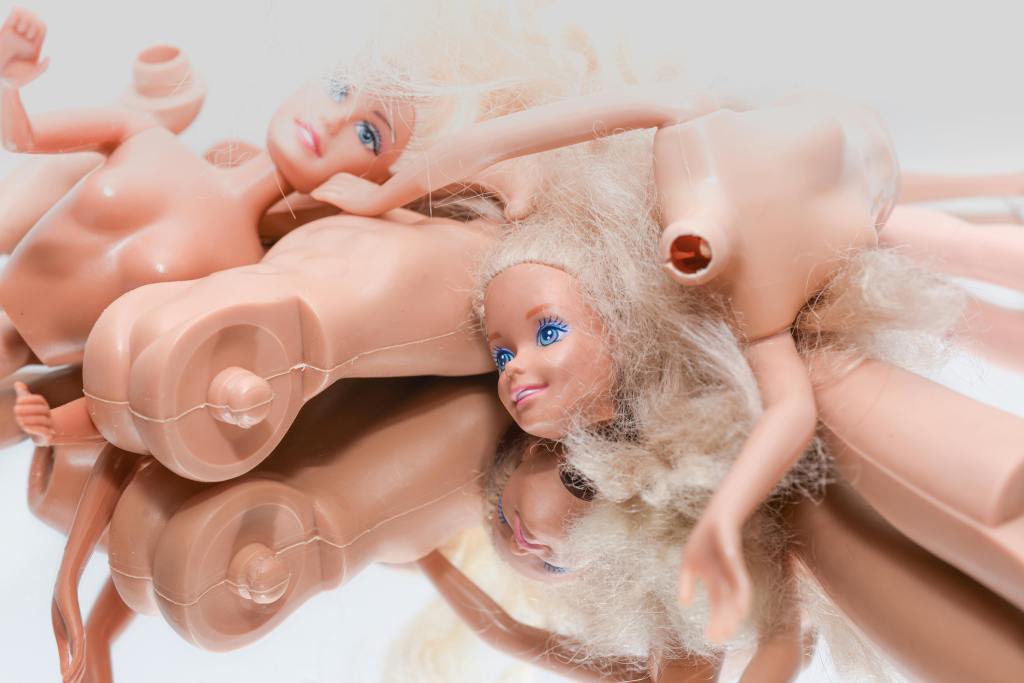
Even so, she is reluctant to step in too early and shut down any creative process. ‘In the senior year, I’d definitely advise against [clichés], but in the early years sometimes you need to let students get it out of their system. Then, once we’ve taught them about what a cliché is, they can recognise it in their own work and question it.
‘I have definitely crushed someone’s momentum by intervening too much and then causing that student to second-guess themselves,’ say Saunders. ‘We definitely don’t want to do that with creativity. If someone’s stuck, then you can intervene – provide materials, ask questions and be a facilitator – but you’re there to help the traffic flow.’ She’s a great believer in the wisdom of Pablo Picasso’s famous quote: ‘Inspiration exists, but it has to find you working,’ she says.
‘Some of my favourite student artworks actually started off with no clear conceptual meaning or logical connection,’ adds Saunders. ‘But technically, they were so good and the students were just so into it that I let it go. And then, through the process of creating work, and that critical dialogue with me and with their peers, at some point, they have a moment of clarity and the connection is revealed.’
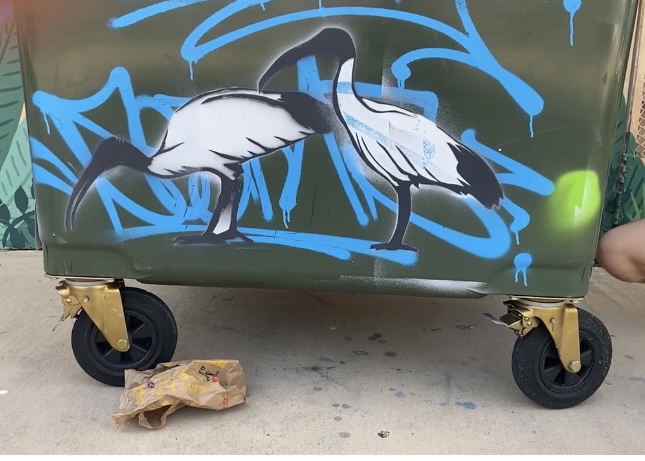
Tease out the story and the personal connections
Fascinated by the processes around art and creativity, Saunders cites books of ideas and activities such as Sarah Urist Green’s You are an Artist: Assignments to Spark Creation. She has also found her teaching practice refreshed by the move into film as well as visual art.
‘The ideation processes around visual art and film have many similarities, but also differences,’ she says. ‘I’m still trying to come up with different ways to inspire divergent kinds of thinking.
‘Sometimes students come into film with the pressure of Tarantino and two-hour feature films, and what we’re looking at is trying to make a five-minute short film that’s meaningful and not necessarily a dramatic kind of film. We also encourage slow and abstract, or documentary – the kind of film that you might see in an art gallery. In teaching, you’re sort of teasing out those points of connection, so that the film that they’re making has a relevance to them, because, you know, when we look at student work, even when it’s technically very good, 99 times out of 100, what keeps you there and makes you think about it afterwards is the story, the connection with what that person was trying to say.
‘I certainly see lots of amazing student artworks and the ones that always stand out are the ones with the story, because in the end, that’s what we buy. That’s why we buy organic fruit with lumps and bumps on it, and it costs twice as much. We buy it because of the story.’
Step back and return with fresh eyes
Asked what advice she finds herself repeating to her students, Saunders stops to think: ‘I’m always telling them to take a step back from their work. Go for a walk, leave it for a bit, and come back with fresh eyes. Have another think about it, because when we’re too close, we can’t see what we’re doing.’
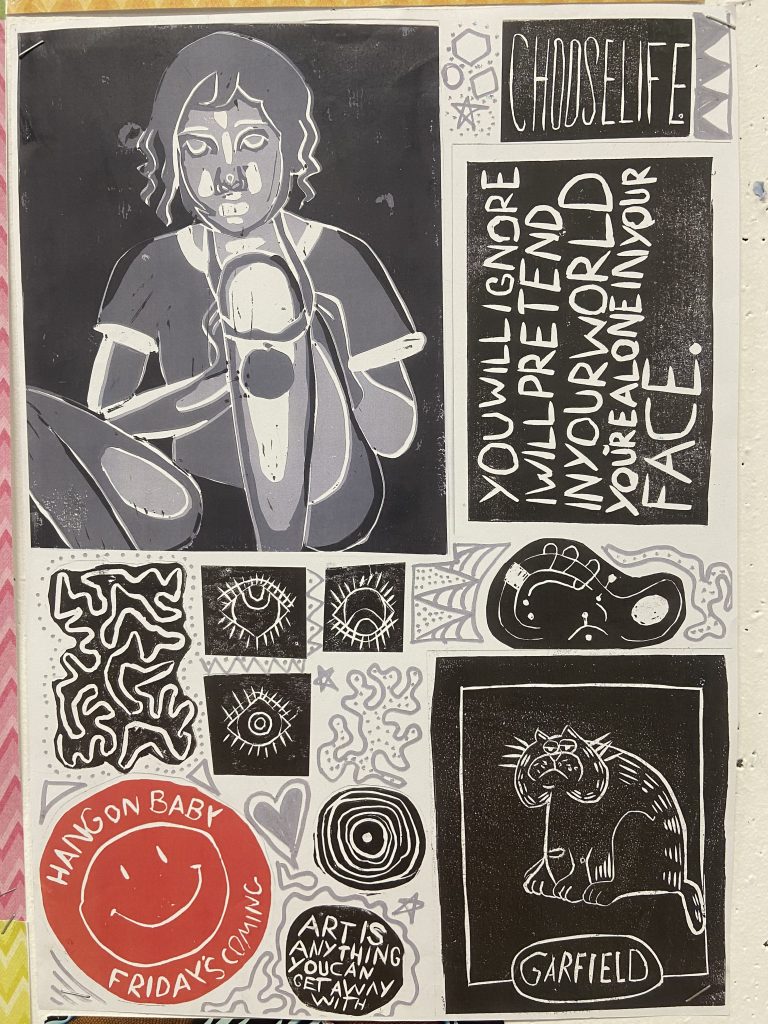
Inspiring creative careers: beyond art teacher or famous artist
Saunders says that, in her experience, among secondary students there is a ‘total lack of awareness’ around careers in the arts, ‘beyond being an art teacher or a famous artist, with nothing in between’.
She adds that during the current economic crisis, students are seeing the financial pressures their parents are under and ‘choosing subjects, possibly with parental pressure, that they think will help them make more money after school. They don’t see the employment pathways that exist within the arts’.
One of her plans to address this is to have an art careers expo and get a whole lot of different professionals from the small and interconnected Darwin community to come and talk to students about the variety of careers that are available. She indicates film as a great example of an area where there are jobs available around Australia, but students and their parents don’t even know what these roles entail, or that they exist.
Read: 29 jobs to consider for a career change in 2024
‘Of course we want our kids to survive out in the world and pay their way, but there’s just no awareness of the career pathways that actually exist in the arts, and this lack of awareness is putting pressure on students to avoid pursuing creative elective subjects like art.’
Lighten up and empower young voices
Ultimately, inspiration and originality thrive around a spirit of playfulness, and Saunders advocates keeping a sense of lightness and fun.
‘Students are already putting so much pressure on themselves, so keep it light, make it fun, play games and expose them to different materials, processes, techniques. Be a bit silly and crazy. I mean, if you can’t do that in art class, where can you do it?’
At the same time, she speaks of trying to create a ‘spirit of sacredness’ where students are surrounded by each other as like-minded individuals, almost like a family.
‘Young people have so much to say and there’s so much going on in the world right now,’ says Saunders. ‘Their voices are powerful. And our job as teachers is to help them have the confidence to be able to use them in a meaningful and challenging way.’
The National Visual Art Education Conference (NVAEC) will be held at the National Gallery of Australia in Canberra, 22-24 January 2024.

